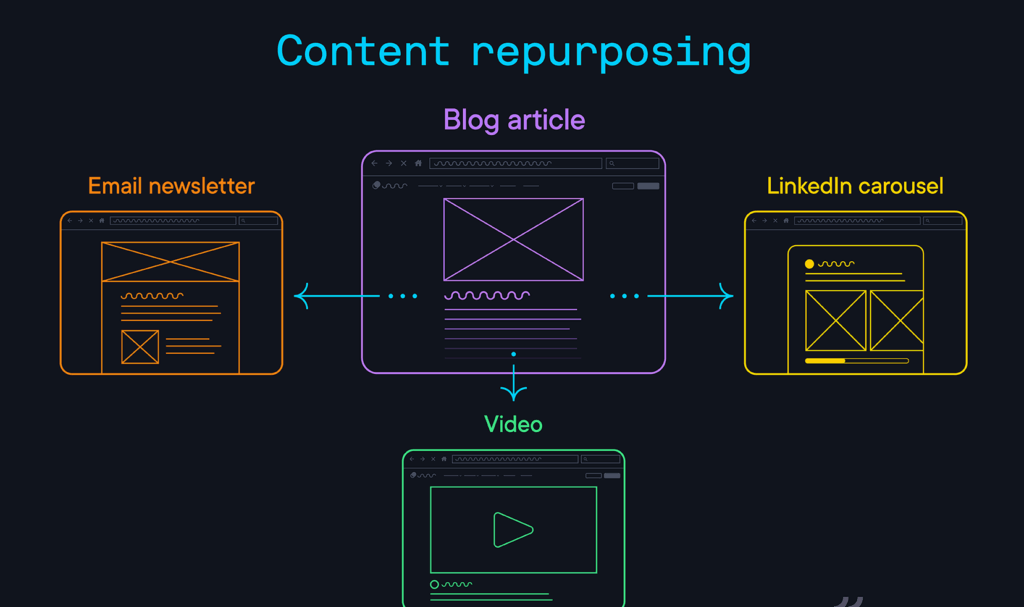Blogging isn’t easy. You know that already. Coming up with fresh ideas, writing them, editing, optimizing for SEO—it can feel like a never-ending treadmill. And here’s the kicker: you want to grow your blog without burning out or sacrificing quality. That’s where content repurposing and automation come into play. Think of it as working smarter, not harder.
Why Repurposing Is a Game-Changer?
Here’s something to think about: you’ve probably written a few posts that really hit home with your readers. Maybe one went semi-viral, or at least got good traction. Why let that effort sit there collecting digital dust? Repurposing lets you take a single piece of content and transform it into multiple formats.
Imagine this: a long-form blog post can become a carousel on Instagram, a thread on Twitter/X, or even a short video for TikTok or YouTube Shorts. Same core idea, different audience, more reach. You’re essentially turning one seed into a mini orchard.
And don’t worry, repurposing isn’t about lazily copying and pasting. It’s about adapting. Change the tone, shorten the sentences, tweak examples, or make it visual. People consume content differently depending on the platform, so your repurposed content should fit the medium.
Automation Isn’t Just About Saving Time
Okay, let’s clear this up. Automation doesn’t mean robots take over your blog and post nonsense while you nap. (Wouldn’t that be nice, though?) It’s more about reducing repetitive tasks so you can focus on creativity.
Tools like scheduling software, social media managers, and even AI can handle the grunt work: posting at optimal times, generating meta descriptions, or even summarizing long posts for newsletters. The key is to choose tools that support your workflow instead of controlling it.
Here’s the thing: automation is like hiring a really efficient assistant. They don’t replace your voice, they just help you deliver it consistently.

Keep Quality Front and Center
Now, here’s where a lot of bloggers slip up. In the quest for scale, some start cutting corners—thin content, sloppy edits, or over-reliance on AI. That’s a slippery slope. Your readers can tell when something’s rushed. And trust me, losing that trust is hard to recover.
Instead, think of quality as your North Star. Use automation and repurposing as tools to maintain—or even enhance—quality. Maybe automation frees up time to add better images, research stats, or include a personal anecdote. Maybe repurposing lets you tailor the message for different audiences more effectively. Either way, the core idea is: scale without compromise.
Practical Steps to Get Started
Alright, let’s get a little tactical. Here’s a simple approach to make this work:
- Audit Your Existing Content: Look at posts that performed well or cover evergreen topics. These are your repurposing goldmines.
- Identify Formats: Think beyond blog posts. Videos, infographics, podcasts, newsletters, social snippets—mix it up.
- Use Automation Wisely: Schedule posts, auto-generate summaries, or even use AI to suggest headlines. But always review before publishing.
- Test and Iterate: Keep track of engagement. Some formats might work better than others for your audience. Learn from it and tweak.
Here’s the deal: even if you start small, the cumulative effect is huge. One blog post can turn into five pieces of content across platforms. That’s five chances to reach new readers, build authority, and drive traffic.
A Little Mindset Shift
Finally, let’s talk about mindset. Scaling a blog doesn’t mean you have to be everywhere all at once. It’s about smart leverage. Repurposing and automation are your levers. Think of them like gears on a bike—you shift them to go faster without pedaling harder.
Also, don’t stress about perfection. Small imperfections make your content relatable. Readers like authenticity more than flawless prose. That’s a little secret most bloggers don’t talk about.
Wrap-Up
Here’s the takeaway: content repurposing and automation are not magic fixes, but they’re powerful tools. They help you scale, reach more people, and save time—without sacrificing the heart of your blog. Focus on quality, experiment with formats, and let the tools do the heavy lifting.
At the end of the day, your blog is still your voice. Repurpose, automate, but don’t lose that. Keep creating, keep experimenting, and yes—have a little fun along the way. Because if blogging isn’t fun, what’s the point, right?

